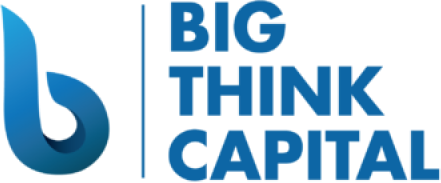Weathering the Storm: How to Reinvent Your Small Business Financial Strategy in the Face of Rising Interest Rates and Inflation
Estimated Reading Time: 6 minutes
- Evaluate your current debt structure and explore refinancing opportunities.
- Diversify your funding sources to ensure financial flexibility.
- Implement cost-control strategies to maintain profitability.
Table of Contents
- Understanding the Current Economic Climate
- How Rising Interest Rates Impact Borrowing
- Reinventing Your Financial Strategy
- Assess and Manage Existing Debt
- Secure Flexible Financing Options
- Focus on Cost Control and Operational Efficiency
- Plan for the Future with Robust Financial Forecasting
- Three Practical Takeaways for Business Owners
- Conclusion
- FAQ
Understanding the Current Economic Climate
As of early 2025, inflation rates have fluctuated between 3% to 4%, which, while lower than the peak seen in previous years, still poses challenges for many small businesses. Higher interest rates mean that loans and lines of credit become more expensive, potentially squeezing your cash flow and impacting your growth plans. Business owners must be proactive to secure their financial footing.
How Rising Interest Rates Impact Borrowing
Higher interest rates have a direct effect on the cost of borrowing. For small business owners, this can manifest in a variety of ways:
- Increased Loan Payments: If you have variable-rate loans, your payments are likely to increase as rates rise. Fixed-rate loans can also become less appealing, as new loans may come with higher interest costs.
- Reduced Access to Capital: Lenders may tighten their credit standards, making it more challenging for small businesses to qualify for loans.
- Budget Constraints: Rising rates mean higher monthly expenses, which can affect your budget for operational costs or expansion.
Understanding these impacts is crucial as it sets the stage for developing a robust financial strategy.
Reinventing Your Financial Strategy
To effectively navigate rising interest rates and inflation, small business owners should adopt several key strategies. Consider the following approaches to ensure your business remains resilient:
Assess and Manage Existing Debt
A thorough evaluation of your current debt structure is essential. This includes:
- Refinancing Options: Explore opportunities to refinance existing debts, particularly if you have high-interest loans. Check out the current rates and see if a better deal is available.
- Debt Consolidation: If you have multiple loans, consolidating them into a single loan can streamline payments and potentially reduce interest rates.
- Prioritize Payments: Focus on paying down high-interest debt first. This strategy can ease the financial burden as rates continue to rise.
Secure Flexible Financing Options
In an unpredictable economic environment, flexibility is critical. Consider diversifying your funding sources:
- Working Capital Advances: Ideal for those who need immediate cash flow solutions, these advances offer quick access to funds without long-term commitments.
- Lines of Credit: This option allows you to borrow as needed while providing a safety net for unexpected expenses. A line of credit can be a strategic tool during uncertain times.
- Equipment Financing: If you need to update or acquire new equipment, seek financing specifically designed for such purchases. This can help spread costs over time while retaining operational efficiency.
The right financing strategy can lead to savings and improved cash flow management.
Focus on Cost Control and Operational Efficiency
Rising inflation can lead to increased operational costs. Business owners should identify areas for cost control:
- Streamline Operations: Analyze your operational processes for inefficiencies. Implementing lean practices can reduce unnecessary expenses.
- Negotiate with Suppliers: Engage with suppliers to negotiate better terms or seek alternative providers that can offer competitive pricing.
- Utilize Technology: Invest in technology that enhances productivity while reducing costs over time. This can include automation tools or software that manage finance and inventory more effectively.
By focusing on these areas, you can mitigate the impact of rising costs.
Plan for the Future with Robust Financial Forecasting
Establishing a solid financial plan is crucial for navigating turbulent economic conditions. Regularly updating your financial forecasts can help you identify challenges before they arise.
- Scenario Planning: Create multiple financial scenarios based on varying interest rates and inflation levels. Assess how each scenario would impact your business.
- Budget for Contingencies: Set aside a financial buffer to account for unforeseen circumstances.
- Regularly Review: At least quarterly, revisit your financial forecasts and budgets to ensure they align with the changing economic landscape.
Three Practical Takeaways for Business Owners
As you navigate the challenges posed by rising interest rates and inflation, here are three actionable insights:
- Evaluate Your Debt: Conduct a full audit of your debt structure and explore refinancing opportunities to improve terms and reduce costs.
- Diversify Funding Sources: Don’t rely solely on one form of financing. Explore options like working capital advances and lines of credit to ensure flexibility.
- Employ Cost-Effective Strategies: Focus on operational efficiencies and cost-control measures that can help maintain profitability even in challenging economic times.
Conclusion
Effectively managing your small business in an environment of rising interest rates and inflation requires a mix of strategic planning, financial acumen, and adaptability. By assessing your current financial situation, exploring new funding options, and implementing cost control measures, you can place your business in a stronger position to weather economic storms.
At Big Think Capital, we understand the intricacies involved in securing financing during uncertain times. Our team of funding experts is ready to help you explore the best financing options tailored to your business needs. To learn more about how we can assist you in navigating these financial challenges, visit us at bigthinkcapital.com or contact us today for personalized advice. Your capital solutions await.
FAQ
Q: How can I prepare my small business for rising interest rates?
A: Consider reassessing your debt, diversifying funding sources, and maintaining an efficient operational structure.
Q: What financing options are available for small businesses?
A: Options include bank loans, lines of credit, working capital advances, and equipment financing.
Q: Why is it important to review financial forecasts regularly?
A: Regular reviews allow businesses to adjust strategies according to changes in the economic environment, ensuring better preparedness.






